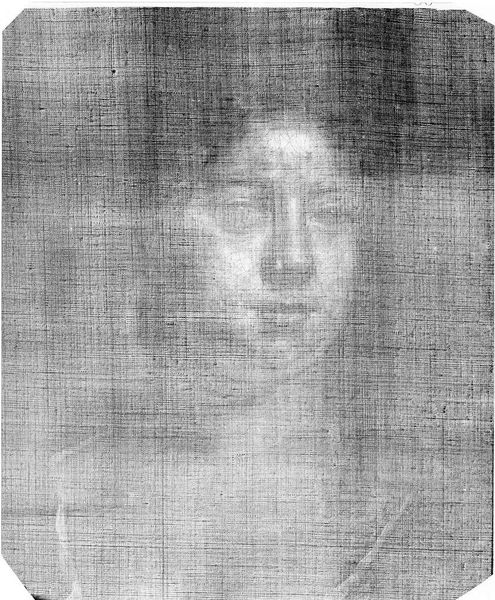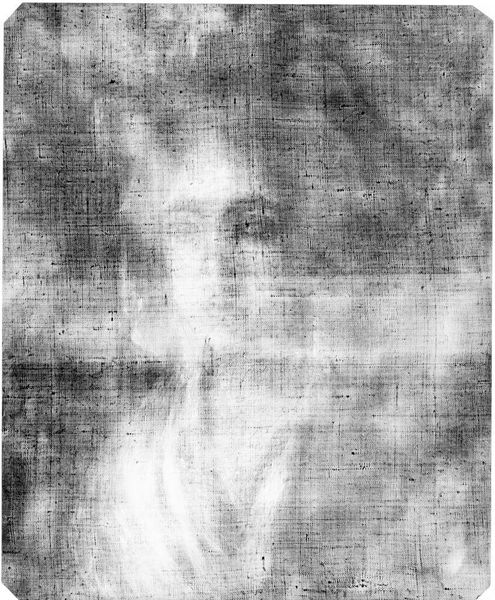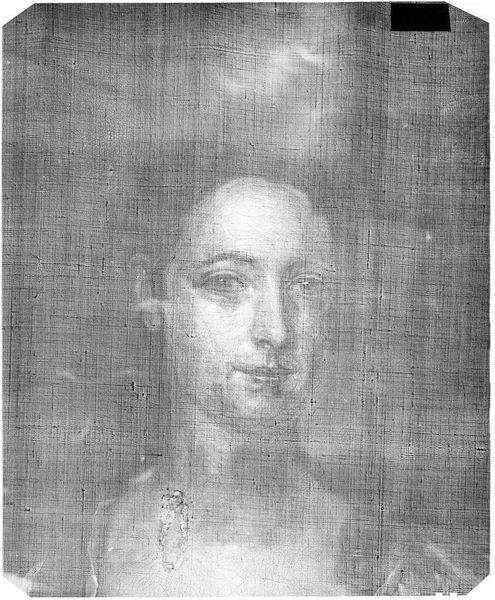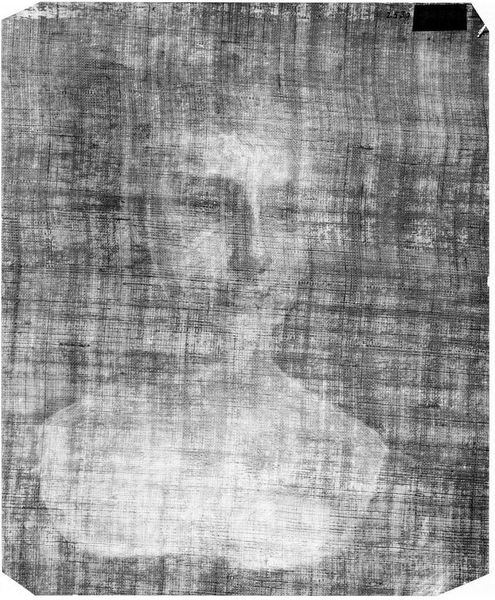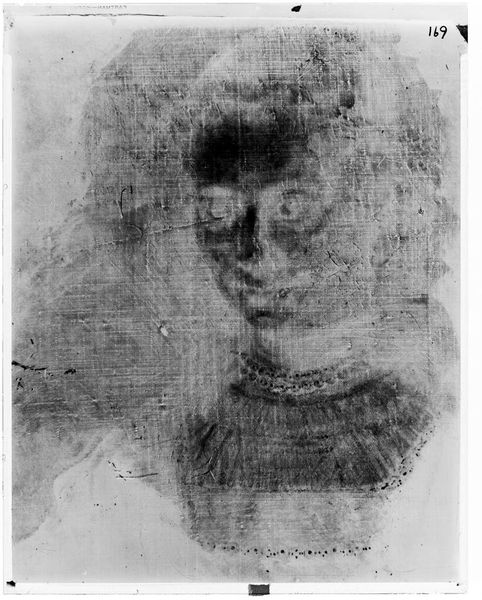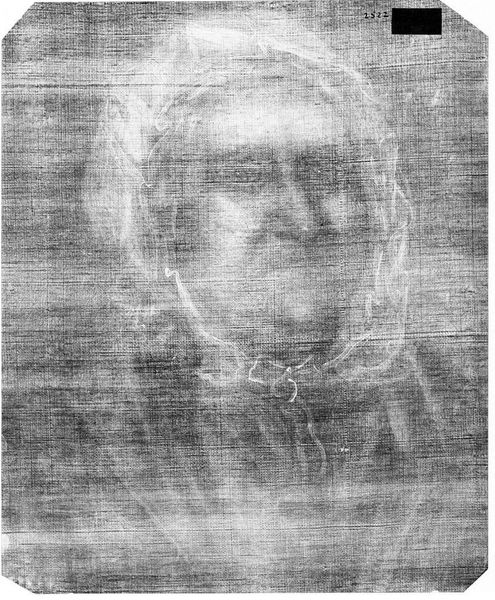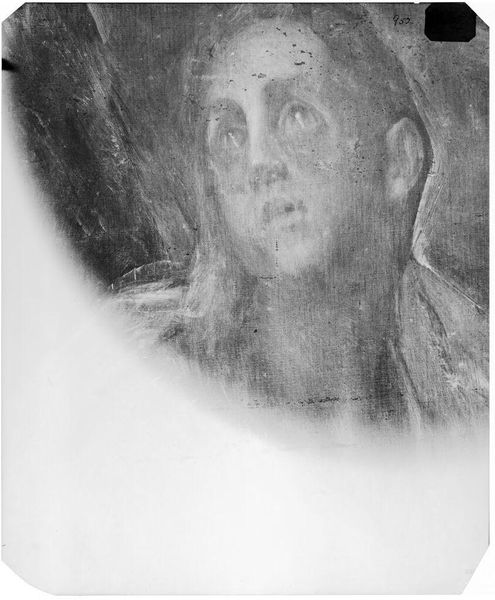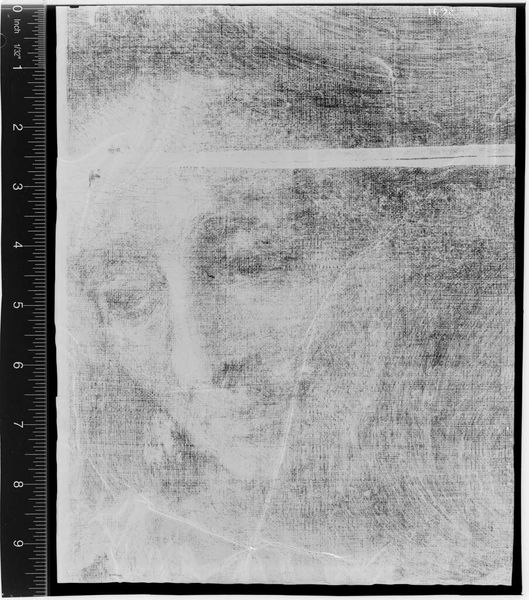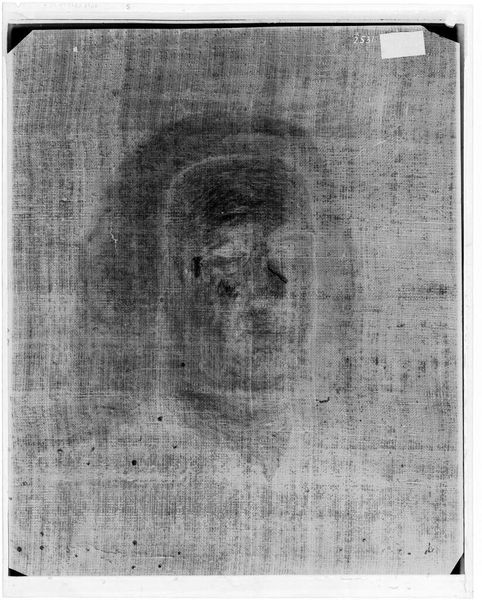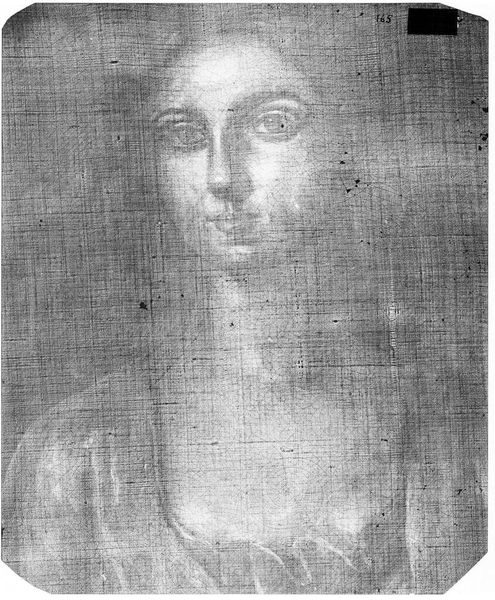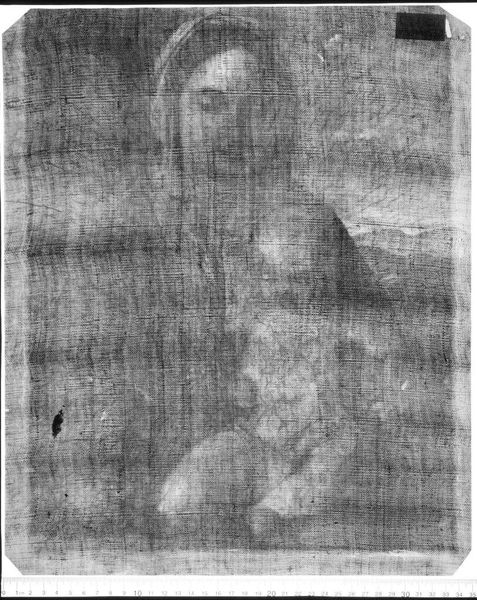
X-radiograph(s) of "Portrait of a Woman of the Plainval Family"
Dimensions: film size: 14 x 17
Copyright: CC0 1.0
Curator: This is an X-radiograph of "Portrait of a Woman of the Plainval Family," originally by Louis Tocqué. It's a 14x17 inch film held in the Harvard Art Museums. Editor: What an ethereal image! It feels like peering at a ghost. The stark contrast reveals so much about the underpainting. Curator: Indeed. X-radiography allows us to see beneath the surface, revealing the artist's process and any hidden layers. It's a key tool in art conservation and historical analysis. Editor: Look at the density around the face. You can almost trace the bone structure, highlighting the formal qualities of portraiture. The composition is undeniably arresting. Curator: These techniques often reveal social and cultural details too. X-rays help us understand material usage and studio practices, connecting art to its production context. Editor: Absolutely. Though the absence of color reduces it to pure form, the ghostly rendering is powerfully evocative. Curator: Yes, it provokes consideration of not just art history, but the passage of time itself. Editor: It does make one consider what it means to ‘see’ a painting.
Comments
No comments
Be the first to comment and join the conversation on the ultimate creative platform.
